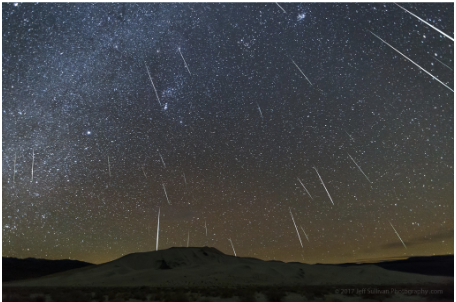December Astronomy Column

Last Month: (November 3rd- December 14th)
November 3rd, 2023: Jupiter was easily seen by observers.
November 18th, 2023: Leonids peak
November 21st, 2023: Alpha Monocerotids peak
December 14th, 2023: Geminid Meteor Shower Peak
This meteor shower is active between Dec. 4 and Dec. 17, but it peaked Dec. 14. It is a huge celestial event and will be easy to see, so go stargazing while it is active!
Coming Up: (December 21st- January14th)
December 21st, 2023: Ursid Meteor Shower Peak
The Ursids are projected to be the last meteor shower of the year and will be active from Dec. 13 to Dec. 24. It is scheduled to peak on Dec. 21.

December 21st, 2023: Winter Solstice
January 4th, 2024: Quadrantid M
eteor Shower Peak
January 8th, 2024: Antares, the red star, will be very close to the moon, making a great sight.
January 10th, 2024: Mars will be paired close to the Moon.
January 12th, 2024: Mercury Easily Seen
January 13th, 2024: Moon will
appear brighter and larger due to its perigee.
January 14th, 2024: Saturn will be paired close to the Moon.
Upcoming Constellations and Planets to See: (December- January) 
Next Full Moon: December 27th, Cold Moon.
December Constellations: Perseus, Triangulum and Aries can be seen in the night sky during December.
December Planets: Jupiter, Venus, and Saturn will be visible this December.
January Constellations: Caelum, Dorado, Lepus, Mensa, Orion, Pictor, Reticulum, and Taurus can all be seen in the night sky during January.
January Planets: Jupiter, Saturn, Uranus, and Neptune can be seen in the night sky, while Mercury and Venus can be seen shortly in the morning this January.
Sources
Picture #1, Geminids: Flickr
https://www.flickr.com/photos/jeffreysullivan/24256488237
Picture #2, Moon’s Perigee: Flickr
https://www.flickr.com/photos/glass_house/4315625556/
Picture #3, Cold Moon: Flickr
https://www.flickr.com/photos/cizauskas/45701926194



























